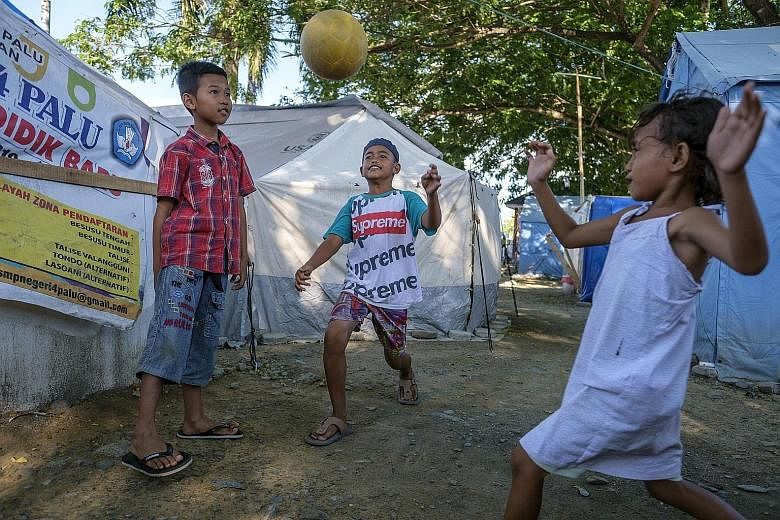JAKARTA • Thousands of children are living in makeshift shelters six months after a devastating earthquake and tsunami pounded the Indonesian city of Palu, aid agencies have said, as the authorities wrestle with a "painfully slow" recovery.
The magnitude 7.5 quake and subsequent deluge razed swathes of the coastal town on Sulawesi Island last September, killing more than 4,300 people, according to Indonesia's national disaster agency.
At least 170,000 residents from Palu and surrounding districts are still displaced and entire neighbourhoods remain in ruins.
Mr Tom Howells of Save the Children said yesterday: "Six months after this disaster we are extremely concerned about the estimated 6,000 children still living in temporary accommodation such as tents, as well as the thousands more that are living in homes that have been damaged."
Salsa, 10, and her parents have lived in a tent ever since the towering waves tore through their home in Donggala near the epicentre of the quake. "The light here is from a battery lamp," the fifth grader said. "Often when we sleep there are a lot of mice."
Monsoon rains have fanned outbreaks of dengue fever and malaria, while some residents have been forced to navigate open sewers and mounds of sharp rubble.
The force of September's quake saw entire neighbourhoods levelled by liquefaction - a process where the ground starts behaving like a liquid and swallows up the earth like quicksand.
The Red Cross said recovery has been "painfully slow" and often complex. "How can you rebuild a coastline, city or community when large parts of it are simply swallowed by the earth?" said the organisation's chief Indonesia representative Jan Gelfand.
Apart from the damage to tens of thousands of buildings, the disaster also destroyed fishing boats, shops and irrigation systems, robbing residents of their income.
The UN development agency's Indonesia representative Christophe Bahuet said: "People in affected communities need a regular source of income to sustain themselves and regain a sense of normalcy."
Indonesia has said the damage bill in Palu topped US$900 million (S$1.2 billion).
The World Bank has offered the country up to US$1 billion in loans to get the city back on its feet.
The vast South-east Asian archipelago is one of the most disaster-prone nations on earth due to its position straddling the so-called Pacific Ring of Fire, where tectonic plates collide.
Last year was especially tough, with disasters ranging from deadly earthquakes on Lombok Island to landslides and volcanic eruptions.
AGENCE FRANCE-PRESSE

